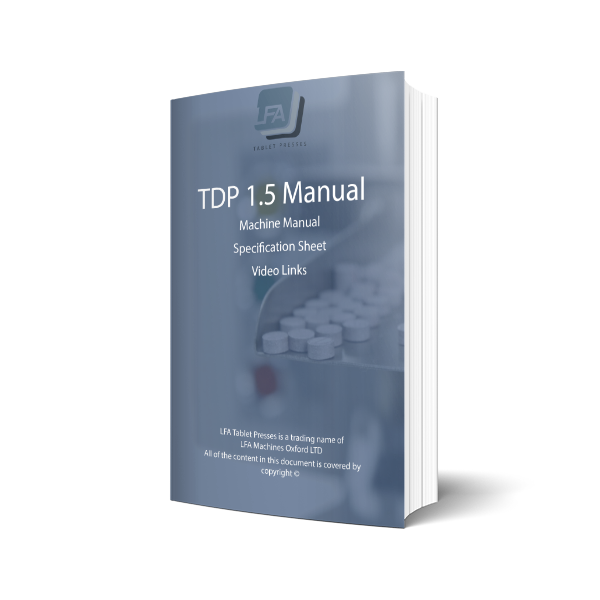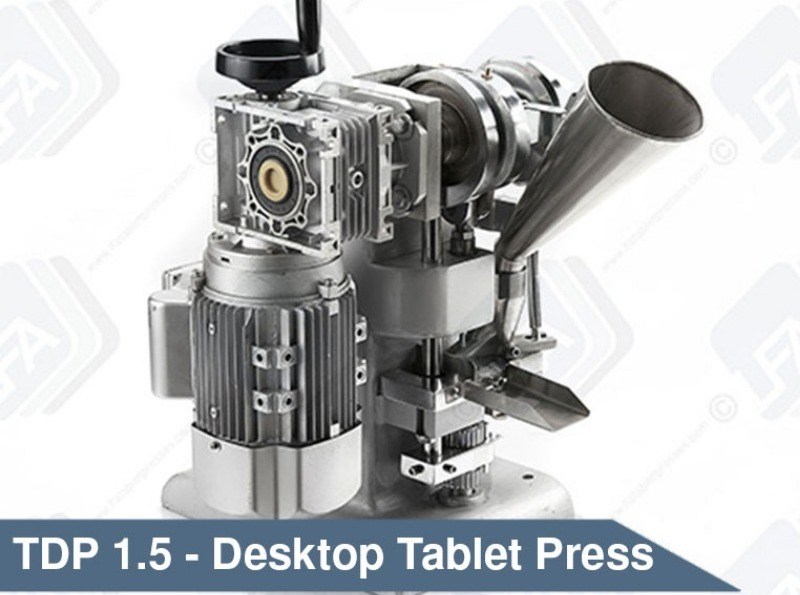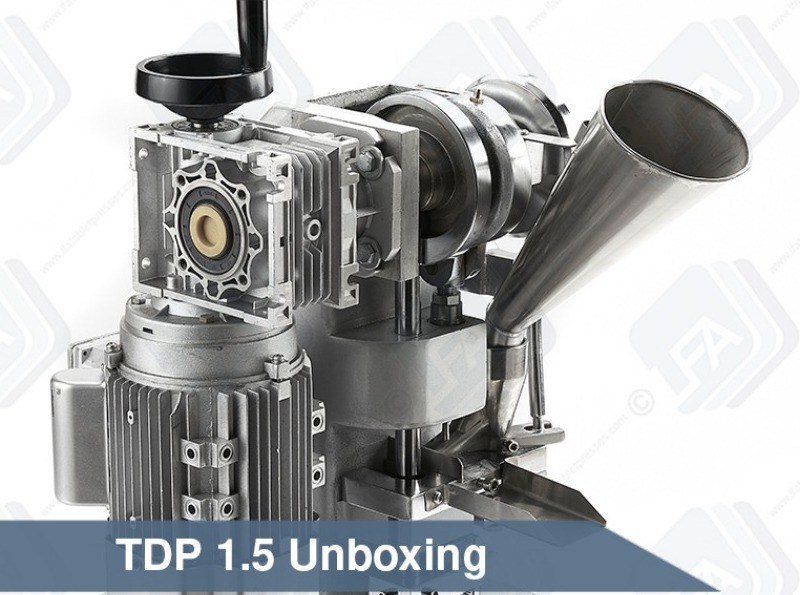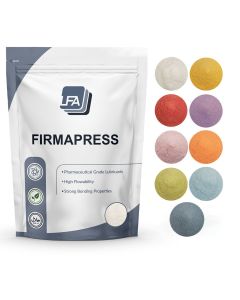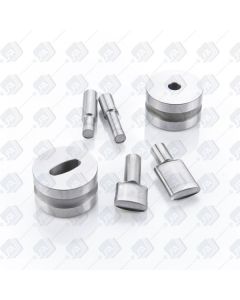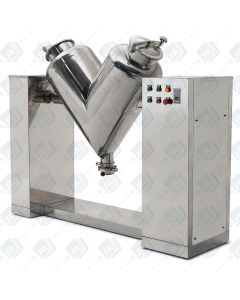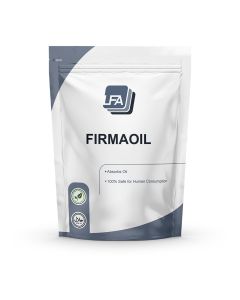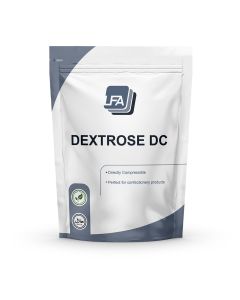All of the TDP range have flywheels except for the TDP 1.5, which has a gearbox. What is the advantage of this?
The advantage of the gearbox is that it has fewer open moving parts. This makes the press safer to use and easier to clean and maintain.
Are all the contact parts on the TDP 1.5 stainless steel?
No. Both the hopper and the boot are made from brass or plastic depending on when you bought your machine from LFA. We moved to plastic in mid 2019.
The standard tooling is made from S7 steel, but can be customized using different steel grades.
The base plate is machined from stainless steel.
Are parts interchangeable with the rest of the TDP range?
Yes. Some of them. There are a number of parts that are able to be changed between the different TDP ranges. This includes the tooling, a lot of the upper and lower drift pin assemblies and the boot bolt and spring.
Are the TDPs CE certified?
No, the TDPs are not CE certified. To acquire this certification, they would have to be installed in a protective cage, which we do not provide.
Are there safety devices in the TDP 1.5 to protect the user?
Yes, there is a stop button. We would, however, also recommend installing the TDP 1.5 in a cage or perspex box.
Can I come to one of your facilities for training with my own formula?
Yes, you can, but there are a number of requirements that we need to fulfill first.
You will need to contact our team and provide them with a copy of all of your MSDSs for all of the components of your mix.
We need to have a good understanding of your business and the challenges you are facing.
You will also need to book an appointment with the office that you would like to visit.
For more information please get in contact with the team: https://www.lfatabletpresses.com/contact
Can I get support from LFA if I face problems with making tablets?
Yes. Very easily.
We have free lifetime technical support for all machines sold by LFA.
Just contact us with your machine serial number and we would be happy to help you with any problems.
Can I make food grade products on this machine? Can I also make pharmaceutical-grade tablets?
Yes, the contact surfaces are all food and pharmaceutical safe.
They are made from a combination of, stainless steel, chrome coated brass and the steel used for your tooling (often S7).
As such they are all compliant with most rules for food or pharma manufacturing.
We strongly recommend that you check your local laws as these do vary from state to state and country to country. If in doubt reach out, and we will be happy to find out.
Can I make shaped tablets? Or with a logo?
Yes, you can.
You are able to make any shaped tablet up to the maximum diameter of this tablet press which can be found under the "specifications" tab.
We are able to customise tooling to include lettering, numbering and logos. If you would like customised tooling please fill out our custom tooling form: https://www.lfatabletpresses.com/custom-tooling-form
Can I order custom tooling?
Yes. You can order custom tooling here
Can this machine be left without an operator?
No.
LFA does not recommend leaving any of its machines unattended without an operator ever. Even if they only need to step away for a short amount of time, the operator should turn off the machine.
This will avoid damaging it in the event that there is a jam and the operator is not there to switch it off.
Can you set this machine up for an custom mg tablet weight?
Yes, the TDP and RTP range all have a weight adjustment for it.
on the TDP it is the bottom of the two cogs on the lower drift pin assembly.
Here is a link to a video showing you how to tune up the TDP 5: https://www.youtube.com/watch?v=4dTscUdRJzQ
Here is a link to a video showing you how to tune up the RTP 9 or the RTP 118: https://www.youtube.com/watch?v=YJFt5AFJ1hw
It is important to know that the exact weight of each tablet will vary from tablet to tablet.
A well-homogenized mix that has a consistent granule size should be able to achieve an accuracy of +/- 3% or less.
Could I make effervescent tablets with a TDP 1.5?
Yes, you could but they would be quite small. Most effervescent tablets are larger to accommodate the large amount of actives that they have to hold. The TDP 1.5 is only able to make a tablet up to 8mm in diameter, so we do not recommend it for anything larger than that, unless it has been tested first.
Do all TDPs and the VICE take the same tooling?
It is important to know two things:
Firstly, TDP Universal Tooling came into effect in 2018. Machines brought from LFA before this time may be slightly different sizes. We always recommend checking the size of your tooling before placing your order.
Secondly, a number of companies make unofficial TDP tablet presses.
They do not always conform to the same sizes, tolerance or quality as LFA TDPs or tooling. If you bought your press from someone else other than LFA, we are not able to guarantee that our tooling will fit.
Do I get a die with the machine or do I have to buy it separately? Which size/shape are they?
Yes, you do get a die with the machine. Every machine comes fitted with a die.
If you would like you can get this customised with your logo or lettering but it takes 6-8 weeks.
Or, we have a standard 8mm round, bevelled edge with breaker installed in the machines in stock.
Do I need a license to own this machine?
That depends on the country you are located in.
In the EU and UK no. You do not need anything to buy the press.
In the USA we have to file a piece of paperwork with the federal government when we sell the press.
We, however, do all of this paperwork for you and do not need to do anything.
The only countries that require a license, as far as we know, are Canada and Australia.
If you are located in Canada then we recommend that you contact Health Canada prior to placing your order. Details regarding the import process can be found at the following link: Importing and registering pill presses (designated devices)
The document you need to fill out and file for a purchase originating in Australia is called a B712. This can be found at: https://www.abf.gov.au/form-listing/forms/b712.pdf. If you would like to speak with one of our team about this, then please get in contact.
Do you have a video on your website showing me how to use the TDP 1.5?
Yes, we do. Here is a link to a video that shows you how to set up your TDP 1.5 once you receive it: TDP 1.5 Unboxing & Setup
Does the machine need to be bolted down? Does it come with bolts to fix it to a surface?
No, it does not need to be bolted into position but we do recommend it. If the machine is not secured in position by bolts or another method then it is more likely to shake a bolt loose, resulting in varying tablet weights. On top of this, the vibrations are likely to make the machine sound louder.
The machine does not come with bolts because we do not know the thickness of your surface.
Does the TDP 1.5 have a variable speed?
The TDP 1.5 does not have a variable speed adjustment. It is possible to fit the press with a speed adjustment but it is not something that LFA offers as a service.
Does the TDP 1.5 do anything the TDP 5 cannot?
The TDP 1.5 is a little lighter than the TDP 5. It does not have a belt and exposed gears, but this does not affect its ability to make a tablet. The only thing it can not do is exert 50 kN of pressure.
Does this machine come with free training?
Yes, we offer free training at your local LFA office. Training is normally completed in less than one day, but please get in touch for more information.
Does this machine give any data? (e.g weight, pressure or production readouts)
The TDP 1.5 does not come with pressure load cells. It is not possible to fit them to the press.
How do I know when is the best time to change the tooling? In other words, what is the lifetime of the tooling for this machine?
The tooling on the TDP 1.5 is extremely durable. The life of your tooling, however, will depend on a number of things. This includes the shape of your tooling, the formulation of your mix, and the steel that the tooling is made from.
There are a number of questions to ask when determining the life of your tooling:
Does it have any chips or damage to the edge of the upper and lower punch? This section is called the land. If this is damaged it will show up in each tablet as a defect.
Do the tip faces of the punches have any cracks in them?
Is there a pitted look on the top or bottom punch face?
If you measure the working length of the upper and lower punches are they still within tolerance?
Is the upper or lower punch loose within the die bore?
Does the wall of the die bore have obvious scratches or scrapes on it?
Are you still clearly able to see the image, lettering, number or logo in the face of every tablet?
If your tooling shows any of these signs, then it could indicate that it is time to replace it.
How do I replace the tooling on the TDP 1.5? Is it the same as on the TDP 5?
Yes, it is almost completely the same as how you change the tooling on the TDP 5. The only difference is how you use the hand wheel to change the position of the machine so that you are able to complete the process.
Here is a link to how to change the tooling:How To Change A Die | Chaning a TDP Tablet Press Punch Die
How do I set the pressure correctly?
How do you move/install this machine?
There is a bolt eyelet on the top of the machine.
We recommend using an engine hoist to lift the machine off the shipping crate and into the position that you are going to use it in.
How long does it take to do maintenance on the TDP 1.5?
It takes about 1-2 hours to clean, disassemble, and grease a TDP 1.5. We recommend that this is done at the end of every run to ensure the maximum life of your machine.
How often do I need to grease the machine, and which parts particularly of the machine should I lubricate?
We would recommend cleaning down the machine and leaving it re-greased after every use. This will ensure the longest life possible.
Here is a video on cleaning the TDP 5.
When greasing the machine, avoid getting any grease near the tooling or pressing surfaces, as this will get into your tablets and affect your powders.
Grease the top cam well, then apply a small amount to the upper drift pin assembly and the lower timing rod.
With regards to the types of grease or lubricant that we would recommend, this will depend on your product. If you are making food grade products, then you would want to use a grease that was NSF approved. If you are making a very caustic sodium based product, however, then you would need to use a product that is resistant to salts.
More information on greasing your machine can be found here: Product Data
How quickly will the press pay for itself?
We've created a calculator on our website for most of our tablet presses. See the "profit calculator" tab on the product page and enter your profit per tablet to see how many running hours the press will pay for itself and how much profit per hour it will generate.
How would I know if TDP 1.5 has enough power for my product or if I should get a TDP 5 or TDP 6s?
The easiest thing to do is send LFA some of your product for us to test.
This is not a free service, we do charge for this but it could save you buying the wrong machine.
More information can be found on this service here: https://www.lfatabletpresses.com/services
I am just starting out and I am not sure which machine I should order - the TDP 0, TDP 1.5, TDP 5 or TDP 6s?
Is 15kN enough pressure to make a strong tablet?
Yes, you can make very strong tablets with 15kN. It will, however, depend on more than just the pressure. The size, shape, and formula will also determine the quality and strength of a tablet regardless of the machine. Increasing the pressure does not guarantee that your tablet will be stronger.
Is it possible to fit a bigger motor on the TDP 1.5?
It might be possible, but it is not recommended.
The motor that is on the press has been carefully selected to match all of the other parts on the press. Switching the motor for a bigger or faster one could cause excessive pressure in other areas of the press resulting in machine damage.
If you think that you require a machine with more speed or higher pressure then we would recommend that you look into a TDP 5 or RTP rotary tablet press.
Is it possible to get a bigger manual hand wheel on the TDP 1.5 tablet press?
Apart from the tooling, we do not offer customizations on any of the LFA Tablet Presses. The TDP 1.5 has been designed with exact tolerances and forces in mind. Changing these might prevent your press from performing as intended.
Is the machine ready, so I just plug it in and start with my production? If not, what are the steps I need to do before that? What is the installation process?
Yes, the machine comes ready to plug in and go.
It is important to remember that the TDP 1.5 weighs 60 kg, so we recommend securing it to a benchtop. This should be done before running the machine for the first time.
You will also need to tune your TDP 1.5 before using it. We do not recommend just pouring in your mix and turning on the machine. Doing this will likely cause a jam and/or damage to the machine.
Is the pressure of TDP 1.5 strong enough to make consistent herbal tablets?
Yes, it can be, but as with all products it has to be tested. It is impossible to say if every herbal product will bind because it will depend on the total tablet mix and the shape and size of the tablet.
Is the TDP 1.5 a TDP 0 with an electrical motor attached to it?
No. It is not they are completely different presses.
Is there a larger hopper available for the TDP1.5?
No, we do not offer a larger hopper for any of our presses. This is because the TDP 1.5 should not be left unattended at any time. This also prevents particle separation, where the larger particles in a mix rise to the top of the powder. The vibrations of the TDP 1.5 cause this to happen, but the hopper that is included has been designed to reduce the likelihood. If we were to attach a larger hopper then the chance of particle separation would dramatically increase.
Is there a system that allows customers to check the warranty period of their machines?
In order to determine whether or not your machine is still under warranty, you will need to call or email the office the machine was purchased from, and provide the serial number.
Is this machine electric or manually powered?
The TDP 1.5 has an electric motor as well as a small hand wheel located on the top of the gearbox.
We always recommend tuning your press by hand before running it under power.
We do not recommend using the TDP 1.5 for long periods of time by hand. The function of the small wheel is to tune and de-jam the machine.
The dies have become discoloured. Is this because of corrosion?
Yes, this could be down to corrosion or due to oxidation of your product. We would highly recommend taking your tooling out of the press and cleaning it at the end of every production run.
We would also recommend polishing the tooling to keep the surfaces clean and less likely to cause picking or capping.
The screw that holds the boot was damaged by the boot set screw. Did this happen because its knurled nut was tight against the base plate?
Yes, this can happen because the boot bolt and spring have been screwed too far into the press or have not been screwed in far enough. It is important to make sure that the bolt is in the correct position before over tightening the set screw.
It should be pointed out that it will not affect the operation of the press if it is damaged.
What are the construction materials of the TDP 1.5?
The TDP 1.5 has a cast steel base with an enamel coating. There are parts that have been milled from steel and brass.
The contact parts that the powders come into contact with are the steel hopper, the brass/plastic boot (depending on model), the steel of the tooling (this will change depending on tooling specification) and the steel tablet ejection tray.
What is the difference between the TDP 0, TDP 1.5, TDP 5 and TDP 6s?
This is a very common question as all of the machines are extremely similar but equally have different strengths.
The easiest way to split these up would be into automatic and manual machines.
The TDP 0 is the manual model and requires you to turn the handle on the side to produce the tablets. This has the least amount of pressure, and is the entry-level model into the TDP range.
The TDP 1.5, TDP 5 and TDP 6s are all automatic machines that are driven by an electric motor. The TDP 1.5 is the entry-level model of the automatic machines. It has the least pressure at 15 kN and it is also limited in the size of the tablets it can produce.
The TDP 5 is our most popular model and can produce approximately 5,000 tablets per hour. The TDP 5 has 50 kN of pressure, and can produce tablets up to 22 mm in diameter.
The TDP 6s is our top-of-the-range machine and is more suited to irregular shaped tablets. The TDP 6s also has slightly more pressure at 60 kN, and is better suited to certain products that do not form tablets as easily.
What is the length of the warranty? And what are the terms and conditions?
The length of the warranty on any of the TDP range machines is 1 year from the date of purchase.
This warranty covers spare parts and excludes tooling and maintenance labour from LFA for machine services.
When you receive your machine, you will be given a serial number that will also be stamped onto the press. You will be able to use this if you ever need to make a warranty claim.
Full details on the LFA warranty can be found here: Warranty | We Have You Covered
What is your most popular press?
The TDP 5. Hands down, this has been our most popular model for a while now. We do get customers coming back and upgrading to the RTP 9 (normally after a couple of years), but most new customers initially choose the TDP 5.
What kind of tablets would you recommend using a TDP 1.5 for?
The TDP 1.5 is recommended for any tablets that are smaller than 8 mm and bind fairly well, rather than for a specific type of tablet or product. If you are unsure, then it is best to have the product tested. More information can be found on this service here: Services | Why Choose LFA Tablet Presses
What particle size will work on this machine?
As with any tablet press, it is good to have a particle size of around 80-60 mesh.
This would be large enough to avoid large losses and small enough to flow well through the machine. If the powder is finer than this then you are going to experience a larger level of loss.
If the particles are larger than this then it might not flow through the machine well and get caught as it is trying to enter into the die bore.
This being said every powder is very different and you will need to do tries to work out what is best for them.
What plug does this machine come with?
We send out all machines with the local plug on and set up to run on the local power supply.
What PPE equipment is needed to use this machine?
We would recommend using goggles, a dust mask and gloves at a minimum, but you may require a lot more depending on the products that you are working with, and your local health and safety laws.
What should I do if my powders do not bind into a solid tablet? Should I buy TDP 5 or 6s?
It depends on how close you are to forming a tablet with the TDP 1.5. If the tablet binds but gets chipped or damaged during ejection, or falls apart when inside a container, then moving to a TDP 5 or 6 might give you the extra force you need to make your tablet work.
If however, your tablet comes out of the TDP 1.5 as dust, then it is unlikely that the problem you are facing has to do with the amount of pressure that you are applying.
What should we do if we don't want to use any excipients, especially binders?
What technical support and training come with this machine?
There are a number of ways we are able to support you:
- Every machine comes with a full manual that is emailed to you after purchase.
- There is a large range of video tutorials to teach you how to use the press.
- The machine comes with lifetime technical support. You can call, Skype or email to get answers to your questions and problems.
- We also offer free training at any one of our regional offices.
If after all of this you are still struggling to use your press, we are able to come to you. This is a service we charge for.
More information on this can be found here: https://www.lfatabletpresses.com/services
Where is this machine made and shipped from?
All of our machines are made by us in Taiwan, and are shipped to you from our nearest office.
We have offices in the UK, USA, Germany and Taiwan.
Because they are made by us, we are able to control quality and give you the best support possible. And because they are shipped from your local office, wait times are reduced and customs clearance is avoided, ensuring you have support in your time zone in a language that is convenient to you.
Which parts wear most often and should I keep a regular stock of?
The most common part to wear out on the machine is the boot. This comes in direct contact with the die cavity and can be hit or chipped by the upper and lower punches. This is made of brass so that the tooling is protected in the event of a collision. Because of this, the boot is soft and will wear over time. If anything, we recommend keeping a spare to avoid losing production time.
We also recommend that you keep at least 1 spare set of tooling as this can break or wear over time.
LFA aims to hold all major spare parts and tooling in stock so that they are ready to ship out in the event that you need them. The lead times on sold out parts, however, can take up to 6-8 weeks
Will the parts to my TDP 0 fit a TDP 1.5 or TDP 5?
There are a few interchangeable parts if both machines have been made by LFA Machines. From the TDP 0, this includes the tooling, the lower drift pin assembly, and its corresponding set of cogs.
The most important fit to check for is tooling that you may have previously purchased, because the base plates have been redesigned to fit the universal standard tooling die.
More information on the TDP Universal Tooling Standard can be found here: Tooling | Punch & Dies for TDP Pill Presses
All other parts are custom to this press.
Will the parts to my TDP 0 fit on a TDP 1.5?
Yes, some parts are interchangeable if both machines have been made by LFA Machines. The upper drift pin assembly and the lower drift pin assembly will fit.
The most important fit to check for is tooling that you may have previously purchased, because the base plates have been redesigned to fit the universal standard tooling die.
More information on the TDP Universal Tooling Standard can be found here: Tooling | Punch & Dies for TDP Pill Presses
Would it help if we granulate the mix first?
There are three reasons to granulate your formula:
1. To improve the flowability of your formulation.
2. To make your formulation more compressible.
3. To ensure a consistent spread of API throughout the formulation.
If you would like to find out if your mix needs granulation then we do have a tablet formulation service available.
You can find out more about the tablet formulation service here: https://www.lfatabletpresses.com/services

